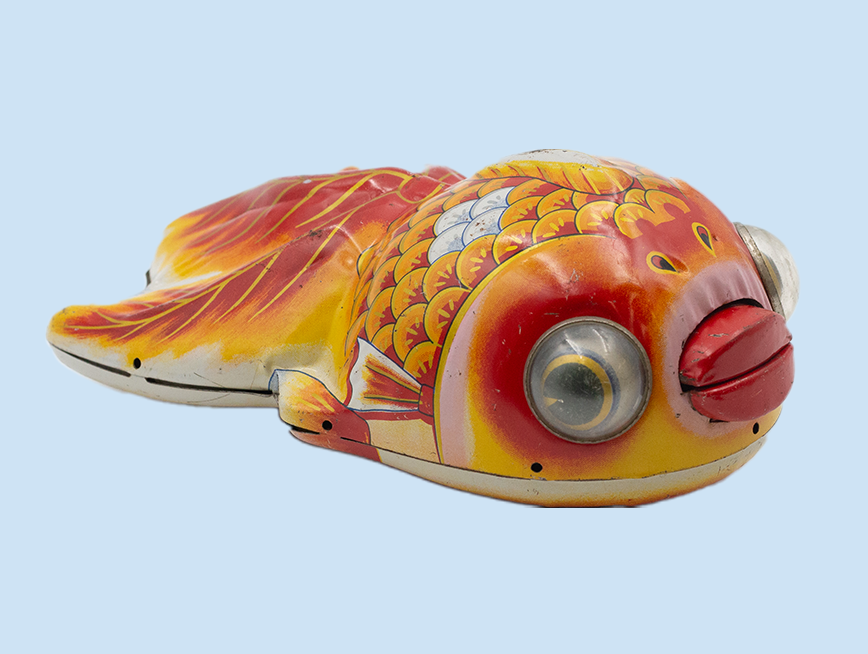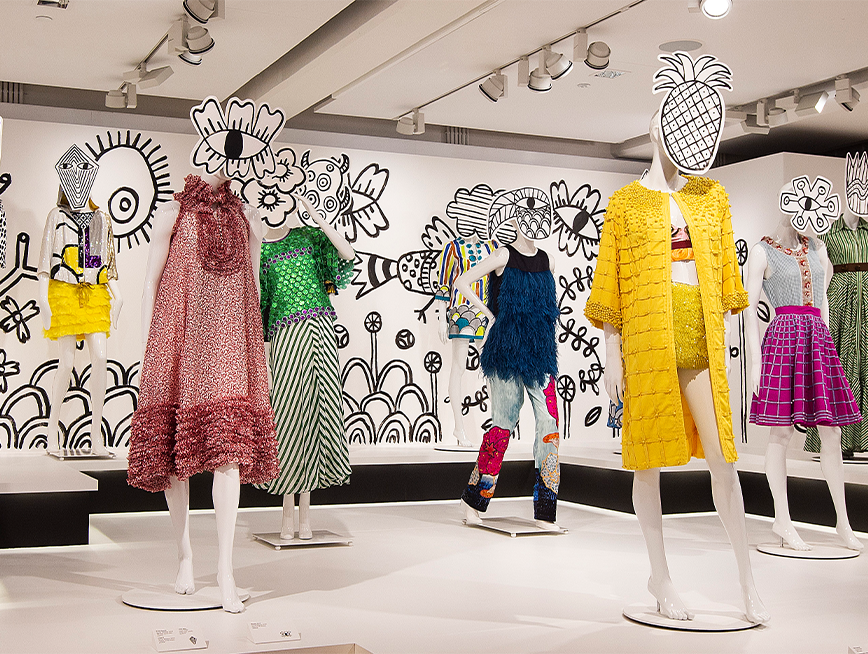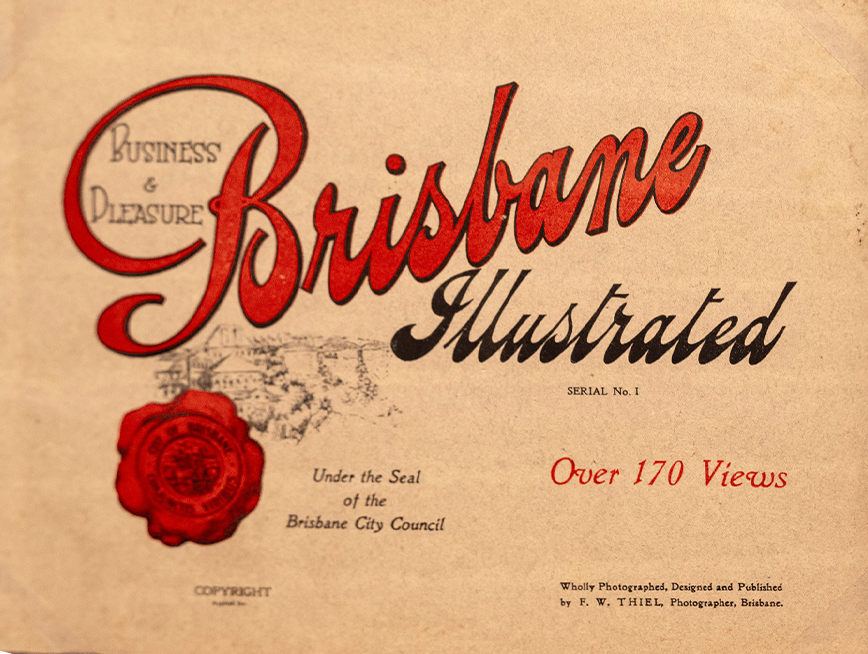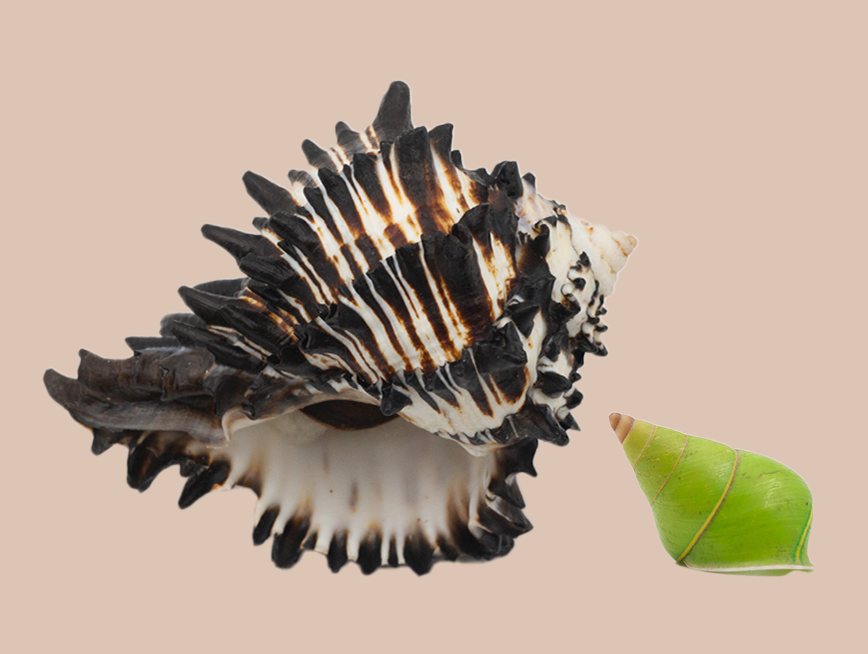Spanning four decades of collecting, Gordon Hookey has recreated an installation of posters from his Yeronga studio in the Museum. With subject matter ranging from protest and social justice to global and local iconography, this collection of posters has acted as a source of inspiration for some of Gordon’s most recognised works.
We caught up with Gordon to discover some of the stories behind his poster collection and their meaning to him.
MoB’s Artist in Residence Program is supported by Tim Fairfax AC.
You’ve been collecting posters for four decades. Do you remember which poster you collected first? What inspired you to pick it up?
I would have collected that [poster] around 1983, when I first came down to Brisbane to study at The University of Queensland. Of course, you know, it was 5-10 years after the Joh Bjelke-Peterson era. There was a real political nous, a spirit of activism and resistance against authority in Queensland after that. At the drop of a hat or with any little hint of injustice, all these different student groups were ready to protest.
The thing is when I started, there were about 25 young Aboriginal students that started at the same time. It was good to have that support mechanism and we were all involved. Whenever anything was happening, we’d all be out.
All the different left-wing groups would set up stalls at the end of the march and people would grab a poster. This one was from a land rights march. Thereafter, I collected pictures and posters intermittently for the next 40 years.

Are there any posters in your collection which stand out to you or that have stimulated lots of conversation?
There is a story attached to many of these posters.
I think one of the most prominent posters, or the most powerful, both aesthetically and community wise, is that of Condoman.
The story goes, as people began to worry about the AIDs epidemic and its possible impact on our community, the Aboriginal Health Workers of Australia responded by making Condoman. He became an iconic figure; you’ll often see people dressed up as him at marches.
What’s interesting is the aesthetic evolution of Condoman, from this cartoon figure to a more three-dimensional character. The poster was almost directly inspired by the Phantom comic. The designer used the red and black, then ‘Aboriginalised’ the face. For legal reasons, they had to reinvent his look. You can see in the second poster, he’s now got the Torres Strait Islander colours – the blue, the white and the green on his wrist cuffs. So, there was a little bit more representation. Then of course, the next iteration they have a Torres Strait Islander sidekick in Lubelicious.
I think of them as a real heroes now, for all the good they’ve done saving lives.

Do you remember how you got your hands on your first Condoman poster?
One of the interesting things about that poster, is how I got it. I was doing a residency working in Townsville at the Umbrella Studios. There was a conference or a gathering on Palm Island. Many of the people attending would stay in these guest houses on the Island.
I met this girl at the hotel who had a roll of posters. She opened them up and there were all these Condoman posters. Only small ones, but she gave me one! She said, “I just came from Palm. At the guest houses, these posters were lining the bottom of the drawers.” They ended up absconding the posters and I got one.
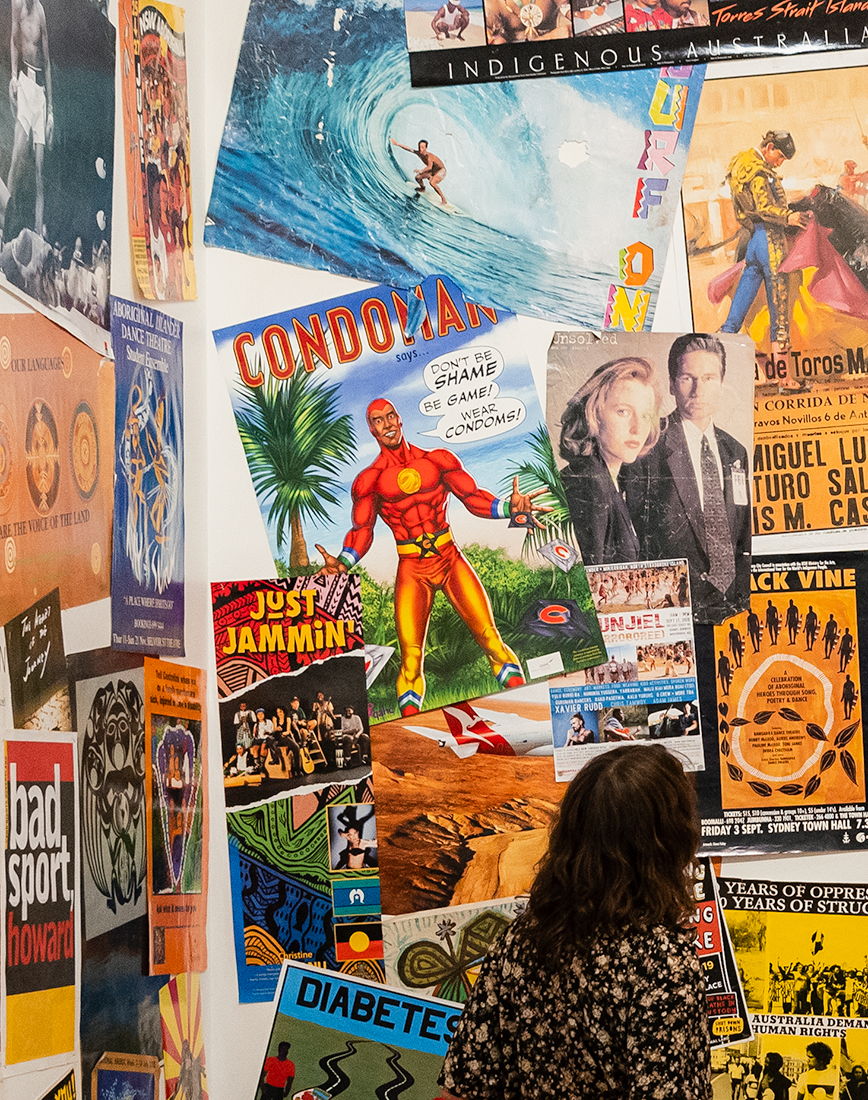
There are a few posters from your travels to Spain featured in your collection. Could you tell us about them? What inspired you to bring them home?
When I was in Spain, I went to the bull fights. At the front of the venue, there were vendors that were selling bull fighting paraphernalia and as tourists do, I bought one. I also collected posters of the flamenco dancers. I saw a real juxtaposition between the brutal nature of bull fighting and the beauty and grace of a flamenco dance. You’ve got these two, almost opposite, representations of a culture which I found interesting.
How do the posters help stimulate your ideas for artworks?
I often have a reference board in my studio. Those reference boards are made up of images, newspaper clippings or things that I feel passionate about. These images or objects, they foster a concept or a way of thinking. Just having them, at my disposal or in my vision, helps keep the concept flowing to a thread.
What do the posters mean to you?
All of this kind of defines who I am. Not only do they show my journey or where I was, but they also show my interests and the curiosity I had in different spaces.
It’s like a diary of my life.
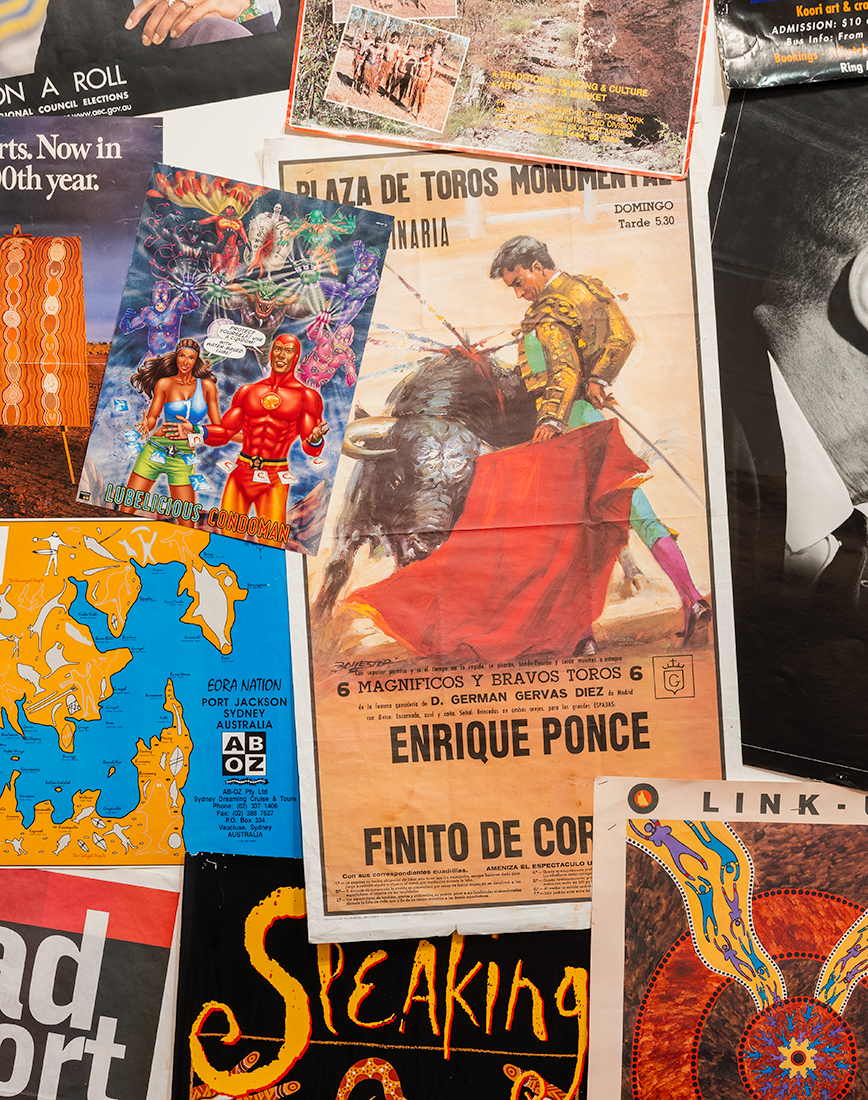
Explore Gordon Hookey’s residency exhibition at Museum of Brisbane until April 2023.


